Note: This is the ninth blog post article in a series of 14 articles on Assessment/Diagnosis of musculoskeletal conditions of the neck (cervical spine). See below for the other articles in this series.
The slump test places tension on the entire spinal cord and peripheral nerves of the upper and lower extremities. It can therefore assess a space-occupying condition/lesion of the cervical and lumbar spinal regions as well as thoracic outlet syndrome (TOS). Although this test is most effective at assessing a pathologic condition of the lumbar spine and sciatica, it can also be useful for assessing a space-occupying condition in the cervical spine and TOS.
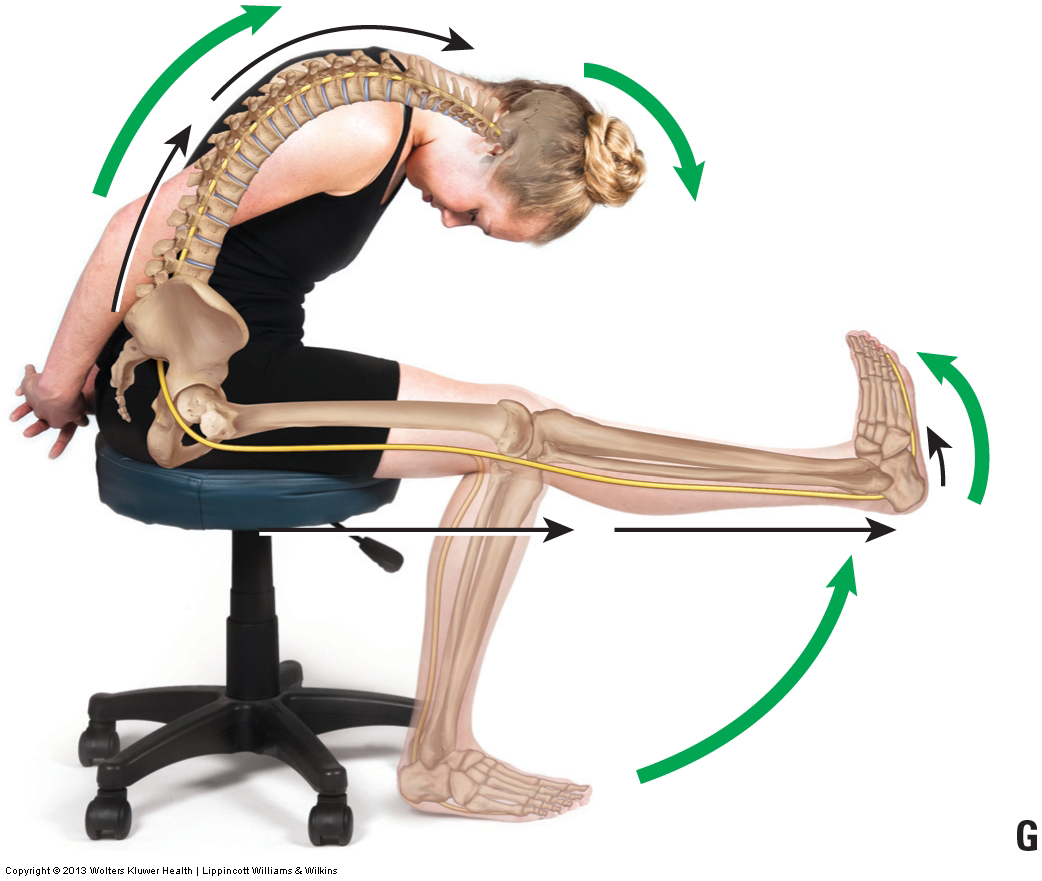
- The slump test is performed in several sequential steps, each one adding to the tension placed on the spinal cord and nerves. The motions may be performed actively or passively.
Begin with the client seated, hands clasped behind the back (Fig. 9A). Clasping the hands behind the back places tension on the brachial plexus and begins the assessment for TOS.
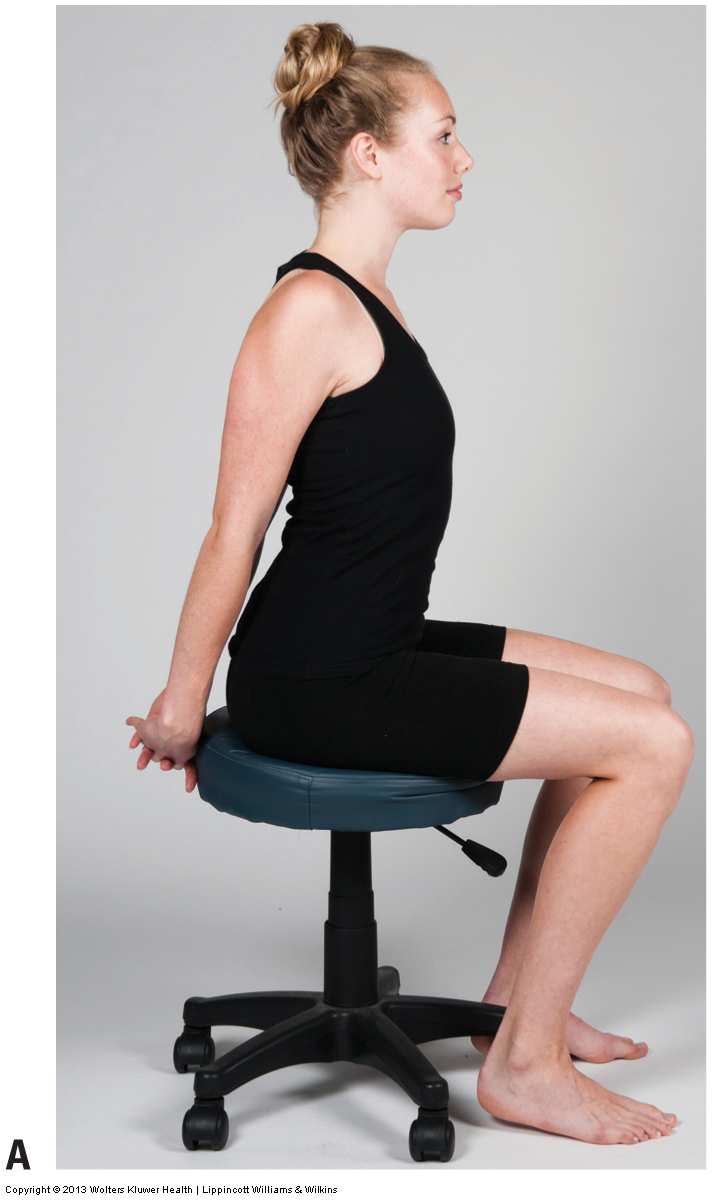 Next, ask the client to slump the thoracic and lumbar spine (Fig. 9B).
Next, ask the client to slump the thoracic and lumbar spine (Fig. 9B).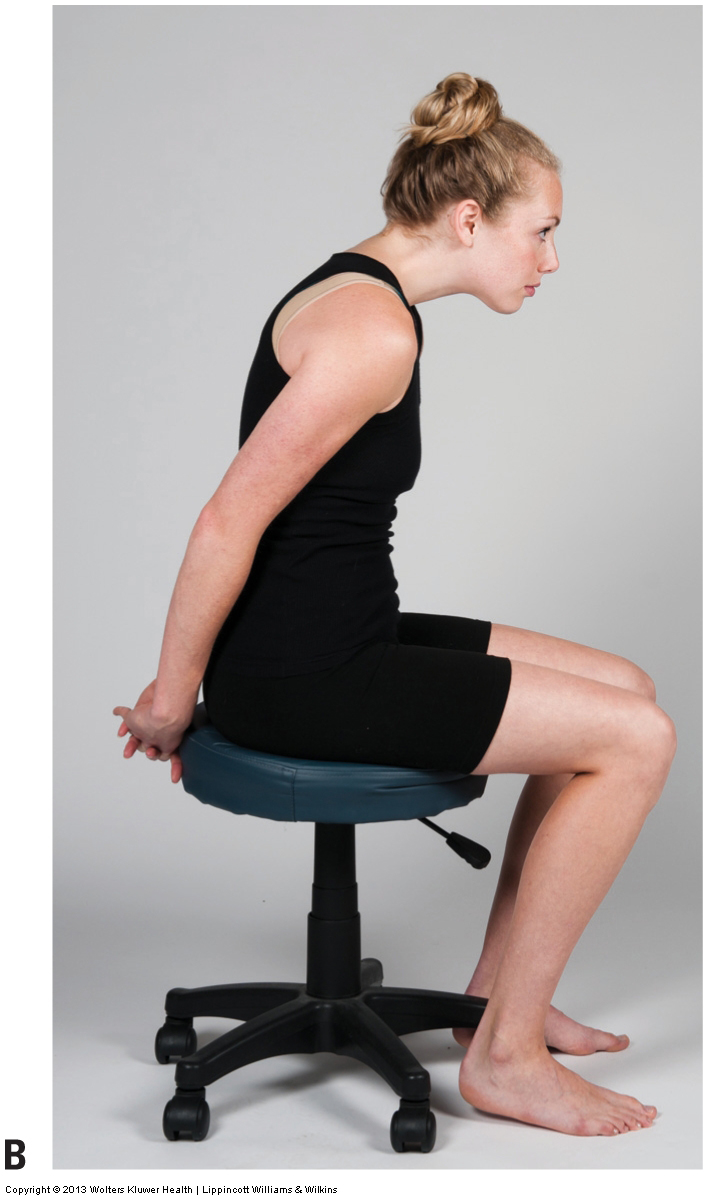 Now ask the client to flex the neck and head (Fig. 9C).
Now ask the client to flex the neck and head (Fig. 9C).
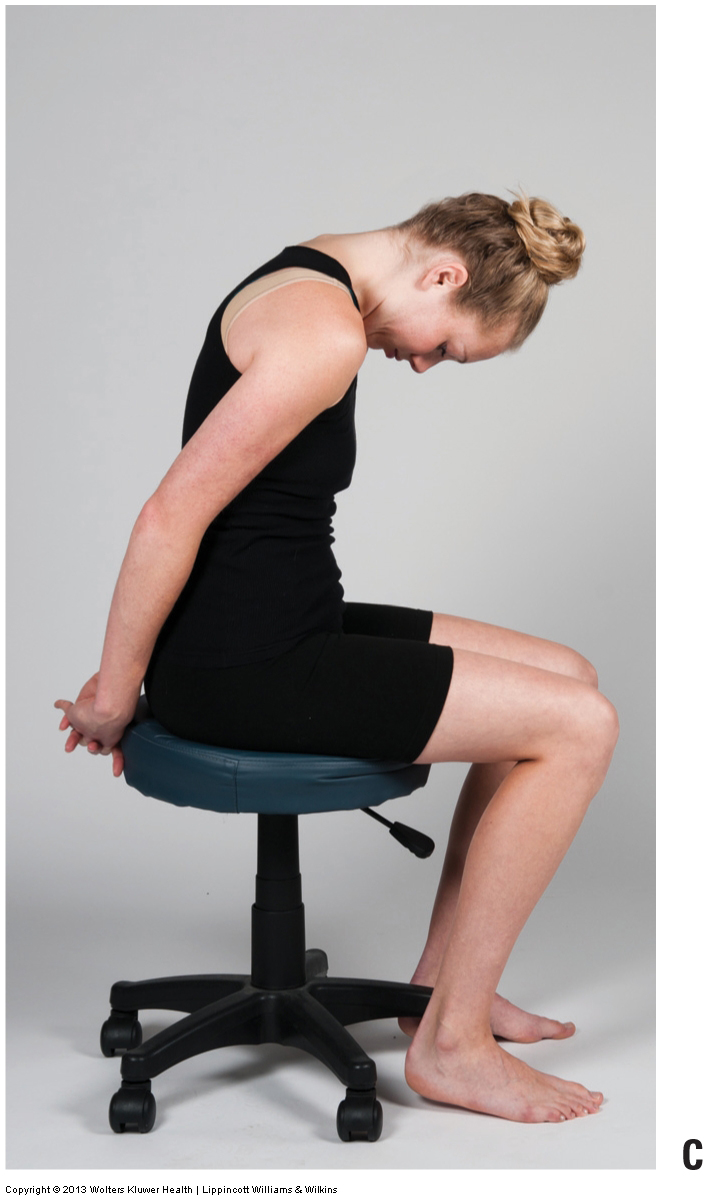 You can then add to neck/head flexion by pressing the client’s head and neck further into flexion (Fig. 9D). These flexion motions of the spine stretch the spinal cord and also add to the tension on the brachial plexus.
You can then add to neck/head flexion by pressing the client’s head and neck further into flexion (Fig. 9D). These flexion motions of the spine stretch the spinal cord and also add to the tension on the brachial plexus.
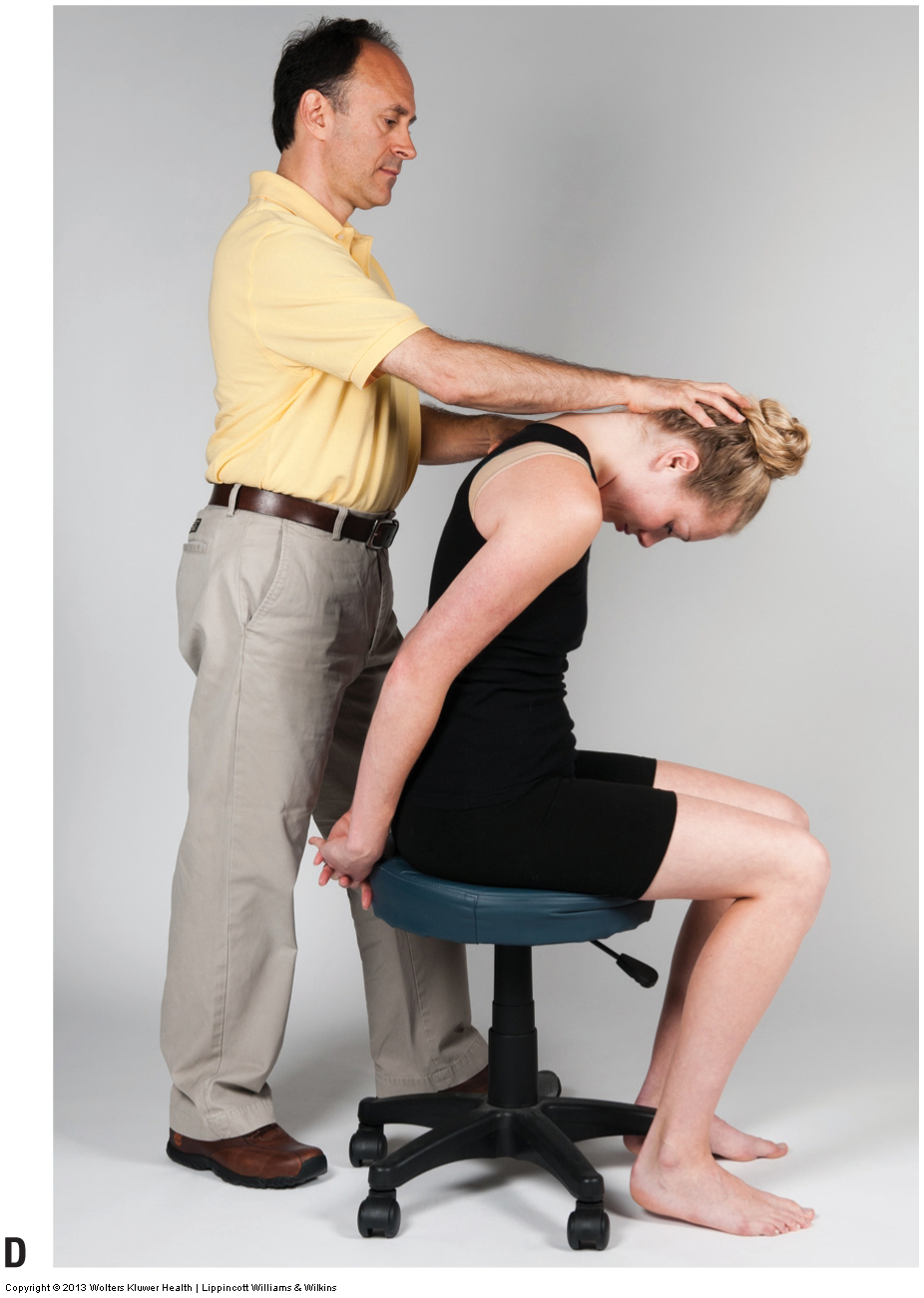 The client’s knee joint is then fully extended (Fig. 9E).
The client’s knee joint is then fully extended (Fig. 9E).
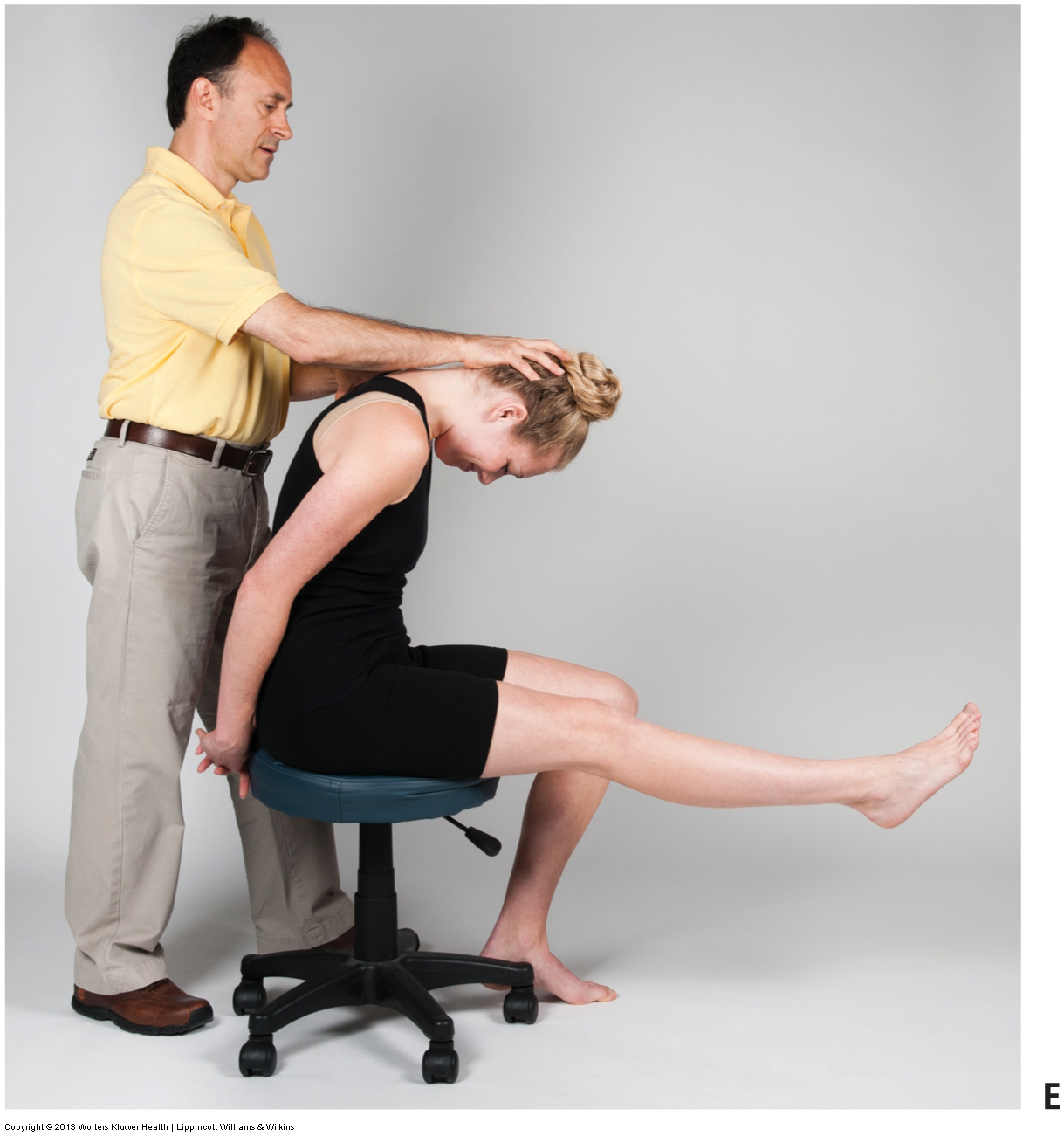
Finally, the foot can be dorsiflexed (Fig. 9F). These motions of the lower extremity add more stretch to the spinal cord and also stretch the sciatic nerve in the lower extremity.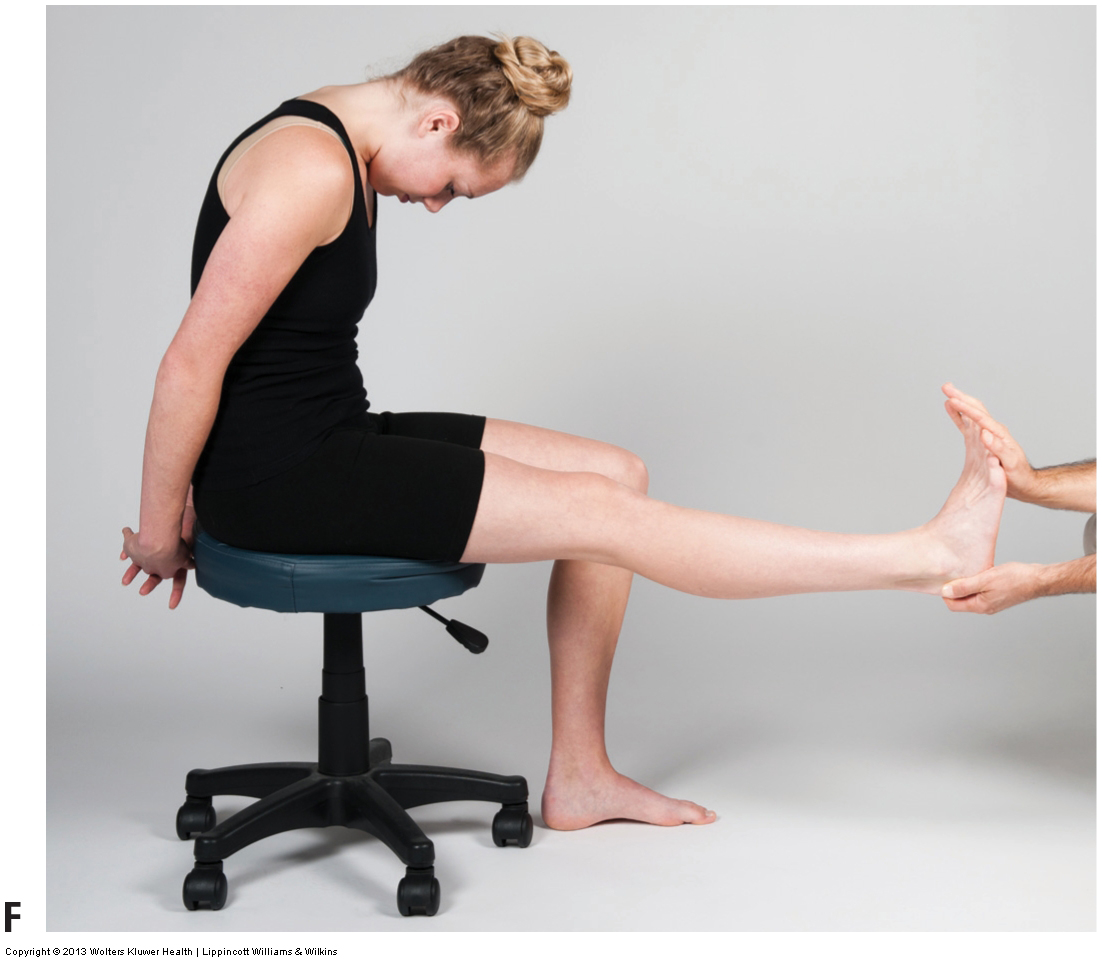 Figure 9G illustrates the sum tension of these steps upon the neural structures.
Figure 9G illustrates the sum tension of these steps upon the neural structures.
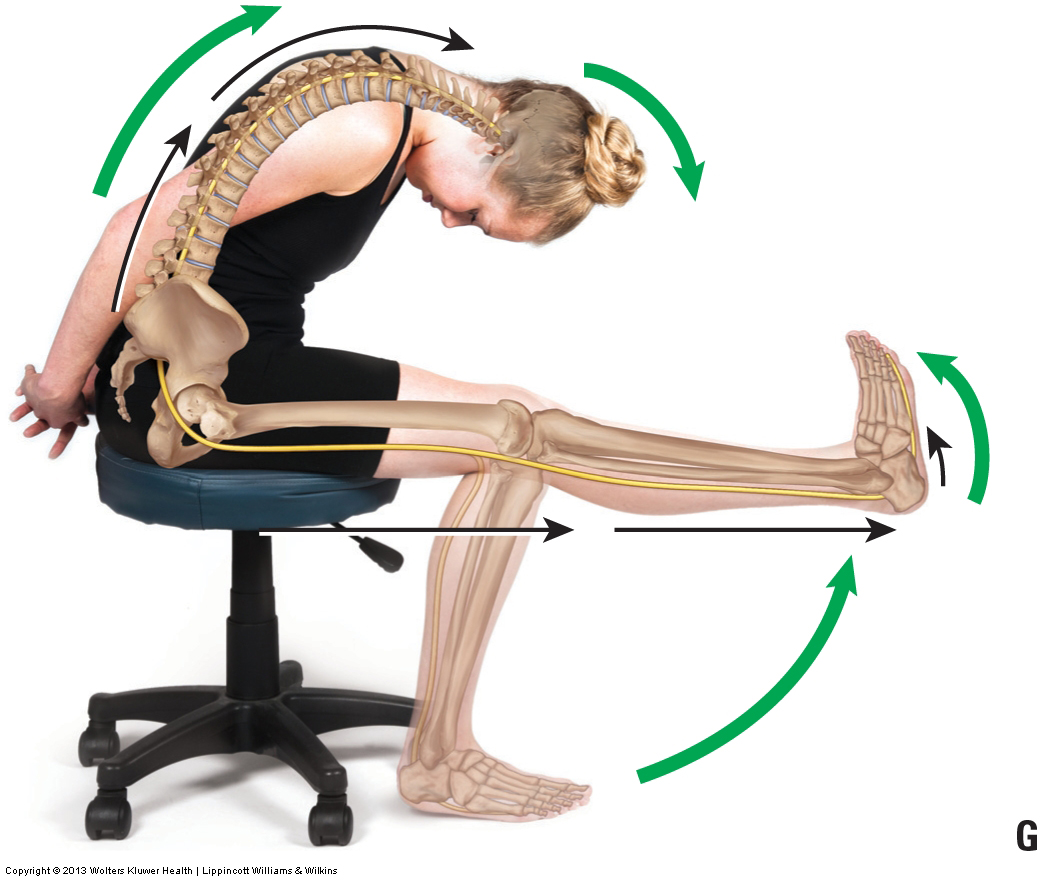
Figure 9. The slump test. The slump test is performed in several sequential steps. (A) The client is seated and clasps the hands behind the back. (B) The client slumps the thoracic and lumbar spine forward into flexion. (C) The client flexes the neck and head. (D) The therapist adds to the neck/head flexion. (E) The client’s knee joint is extended. (F) The client’s foot is dorsiflexed. (G) This figure shows the biomechanics of the slump test, highlighting the stretch/tension that is placed on the spinal cord and nerves.
Note: Because the slump test places so much tension on the spinal cord and nerves, it is common for a healthy client to feel some pain and discomfort during the procedure. Thus, for the test result to be considered positive, the client should either experience a reproduction of the upper or lower extremity symptoms that they have been experiencing or a high level of pain during the procedure.
Big Picture:
- The slump test works by increasing tension on the spinal cord and spinal nerves by means of a pulling force.
- The reasoning is that if a space-occupying condition/lesion is already compressing the nervous system structures, then pulling on the nerves by means of the test will likely tether the spinal nerves against this space-occupying lesion.
- Referral of sensory symptoms into the upper extremity is considered a positive result for either a space-occupying lesion of the cervical spine and/or TOS.
- (If sensory symptoms refer into the lower extremity, the result is positive for a space-occupying condition/lesion of the lumbar spine.)
- As with the other special orthopedic assessment tests for space-occupying conditions, local neck (or low back) pain does not constitute a positive test result.
This blog post article is the ninth in a series of 14 blog post articles on Assessment/Diagnosis of musculoskeletal (neuro-myo-fascio-skeletal) conditions of the neck (cervical spine).
The articles in this series are:
- Introduction to Assessment/Diagnosis of the Neck
- Verbal and Written Health History
- Overview of Physical Examination Assessment
- Postural Assessment
- Neck General Orthopedic Assessment: Range of Motion and Manual Resistance
- Palpation Assessment
- Motion Palpation (Joint Play) Assessment
- Special Orthopedic Assessment Tests for the Neck – Space Occupying Conditions
- Special Orthopedic Assessment Tests – Space Occupying Conditions – Slump Test
- Orthopedic Assessment of Thoracic Outlet Syndrome – Adson’s, Eden’s, Wright’s
- Orthopedic Assessment of Thoracic Outlet Syndrome – Brachial Plexus Tension Test
- Special Orthopedic Assessment Tests – Vertebral Artery Competency Test
- Treatment Strategy and Treatment Techniques
- Assessment and Treatment of Specific Musculoskeletal Conditions


